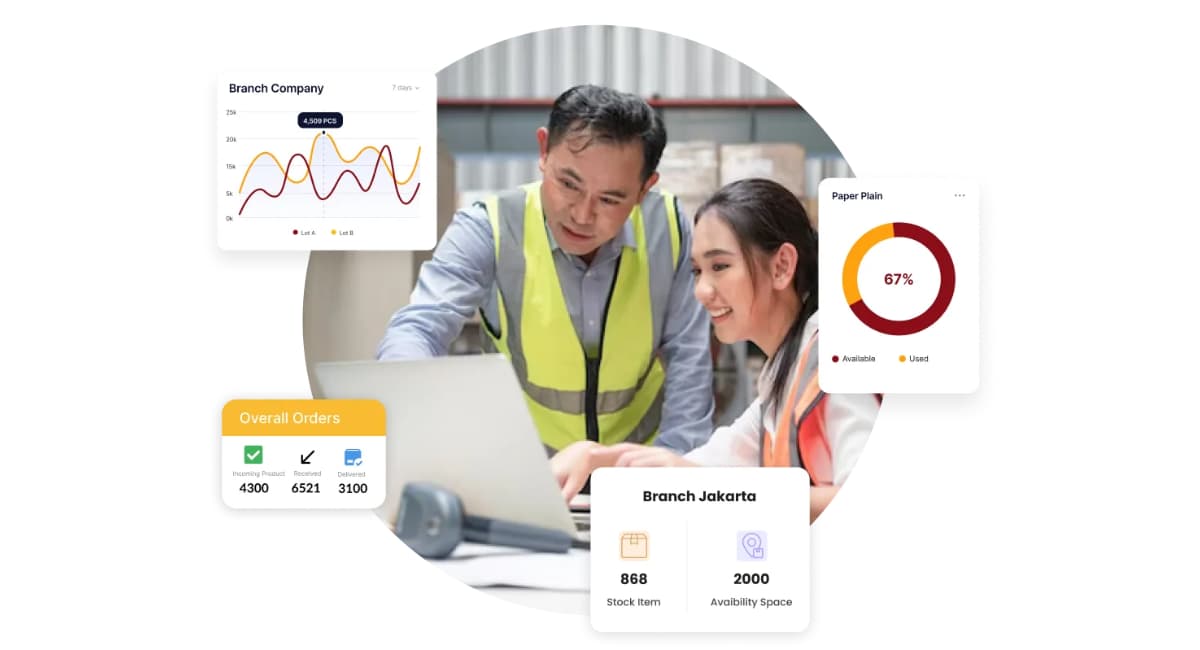Warehouse automated guided vehicles (AGVs) have emerged as the game-changers in the fast-paced world of supply chain management, providing innovative solutions for material handling needs.
Singapore, known for its dynamic logistics sector, has embraced AGVs as the go-to technology to optimize warehouse operations. These intelligent robotic vehicles navigate autonomously and perform a variety of tasks within warehouse environments, streamlining processes and reducing human errors.
AGVs in warehouses offer immense benefits, including enhanced efficiency and productivity. Equipped with advanced sensors and software systems, AGVs ensure swift and accurate movement of goods, adapting to changing warehouse layouts seamlessly. This technological advancement has revolutionized the logistics industry, empowering businesses to meet the growing demands of Singapore’s competitive market.
Join us as we delve deep into the world of AGVs – their understanding, types, applications, operational mechanics, and the pros and cons of implementing them in warehouse settings. Unlock the potential of AGVs and witness the transformation they bring to the warehousing industry in Singapore.
Table of Content:
Table of Content
Key Takeaways
|
Understanding Automated Guided Vehicles in Warehousing
AGVs are revolutionizing warehouse operations through their advanced capabilities in automation and navigation systems. AGVs are autonomous mobile robots designed specifically for warehouse environments, playing a vital role in streamlining material handling processes, optimizing navigation, and improving overall efficiency.
AGVs utilize sophisticated navigation systems, including laser navigation, visual navigation, and inertial navigation, to autonomously navigate the warehouse and execute various tasks. These advanced navigation systems enable AGVs to precisely move goods and pallets, adapt to changing warehouse layouts, and efficiently adapt to different environments.
By integrating AGVs into warehouse operations, businesses can significantly reduce human labor and minimize errors in material handling. AGVs can operate continuously without breaks, ensuring swift and accurate movement of goods throughout the facility. This automation technology optimizes the supply chain by enhancing efficiency and productivity in warehouse operations.
Types of AGVs and Their Applications
Automated Guided Vehicles (AGVs) are available in various types to suit different warehouse settings and requirements. Let’s explore three common types of AGVs: Automated Guided Carts, Forklift AGVs, and Towing AGVs.
1. Automated Guided Carts
Automated Guided Carts are ideal for light material transportation within warehouse environments. These compact and agile AGVs can efficiently move goods and small items between different areas of the warehouse, such as assembly lines, inventory storage areas, and packaging stations.
2. Forklift AGVs
Forklift AGVs, on the other hand, are designed to handle heavier loads and perform tasks that would typically be carried out by human-operated forklifts. These versatile AGVs can safely lift, carry, and stack pallets, containers, and other bulky items with precision and efficiency.
3. Towing AGVs
Towing AGVs are capable of pulling multiple carts or trailers, making them ideal for tasks that require the transportation of larger quantities of goods. They can efficiently transport goods across long distances within the warehouse or between different areas, reducing the need for manual labor and increasing overall productivity.
Each type of AGV has its own unique set of applications and benefits in warehouse settings. AGVs, whether it’s Automated Guided Carts, Forklift AGVs, or Towing AGVs, can be used for a wide range of tasks including goods transportation, order picking, inventory management, and collaborative operations with human workers. Their versatility and adaptability make them indispensable tools in modern warehouses, enhancing efficiency and streamlining operations.
With AGVs at work, warehouse operations can be optimized, ensuring smoother logistics and improved productivity. The next section will delve deeper into the operational mechanics of AGVs, revealing how these intelligent robots navigate and interact within their environments.
Operational Mechanics of Automated Guided Vehicles
AGVs operate within warehouses through advanced navigation, steering, and traffic control mechanisms. These technological advancements, combined with barcode tracking software, have revolutionized warehouse automation in Singapore, optimizing efficiency and productivity by ensuring accurate inventory management and seamless logistics operations.
AGVs utilize cutting-edge navigation technologies such as time of flight (TOF), stereo vision, and structured light sensing to detect obstacles, calculate distances, and avoid collisions. Equipped with sensors, cameras, and control systems, AGVs navigate through complex warehouse layouts, optimizing routes, and making autonomous decisions.
The seamless integration of AGVs into warehouse operations is made possible by their ability to adapt and function in real-time. With their advanced navigation and steering capabilities, AGVs effortlessly navigate the dynamic environment of a warehouse, efficiently managing traffic flow and ensuring the timely delivery of goods.
These technological advancements in AGVs have significantly improved their operational mechanics, making them more efficient and reliable. AGVs enable precise and accurate movement of goods, leading to enhanced overall warehouse automation.
Furthermore, AGVs contribute to the reduction of human errors in material handling processes. By assuming repetitive and labor-intensive tasks, AGVs free up human workers’ time to focus on more complex and strategic activities, boosting overall warehouse productivity.
For an automatic operation and monitor of your AGVs, you might want to use a warehouse management system (WMS). HashMicro’s WMS enables you to centralized control of AGVs and offers real-time alerts to keep warehouse managers informed of AGV-related events.
To know more about the budget to implement HashMicro’s Warehouse Management System, please download the pricing scheme down below.
Pros and Cons of Implementing Automated Guided Vehicles
Implementing Automated Guided Vehicles (AGVs) in your warehouse operations can bring about significant advantages. One of the key benefits is the increased efficiency and productivity that AGVs offer.
These intelligent robotic vehicles operate continuously without breaks, optimizing material handling processes and reducing the need for manual labor. With AGVs handling the tasks, your workforce can focus on more value-added activities, ultimately improving productivity.
Safety is another critical advantage of AGVs. Equipped with precise navigation and obstacle avoidance systems, AGVs can navigate through the warehouse environment with utmost accuracy, minimizing the risk of accidents and injuries. By implementing AGVs, you create a safer working environment for your employees, boosting their confidence and overall morale.
However, it’s important to consider the disadvantages and challenges that come with AGV implementation. An initial investment is required to set up and integrate AGVs into your warehouse operations.
This investment might be significant, making it essential to carefully assess the ROI and long-term benefits. Additionally, maintenance costs may arise as AGVs require regular servicing and software updates to ensure smooth operation.
Furthermore, AGVs have operational limitations that must be taken into account. Proper infrastructure and integration with existing warehouse systems are essential for seamless AGV operation. These limitations may require additional adjustments and investments to fully leverage the potential of AGVs in your warehouse.
Get Full Control of Your AGVs Operation Using HashMicro’s Warehouse Management System
AGVs play a critical role in modern warehouse operations, providing efficient and automated transportation of goods. HashMicro’s Warehouse Management System (WMS) offers tools to monitor and control AGVs, enhancing warehouse efficiency and productivity.
Here’s how HashMicro can support AGV operations in warehouses.
- Real-time inventory tracking: HashMicro’s WMS provides essential real-time inventory tracking, aiding AGVs in efficient navigation and goods transportation within warehouses.
- Automated workflow management: Our WMS enhances warehouse efficiency by automating workflows like picking and order fulfillment with AGV integration, reducing manual tasks.
- Control and coordination of AGVs: Our system centralizes AGV management, enabling route adjustments, task assignments, and efficient scheduling on a unified platform.
- Alerts and notifications: HashMicro’s system features customizable alerts for AGV incidents, ensuring managers stay updated and warehouse operations run smoothly.
- Enhanced safety and compliance: Our system boosts warehouse safety by monitoring AGVs for compliance with safety standards, minimizing accidents and ensuring safe operations.
With HashMicro’s system, businesses can effectively monitor and control AGVs in the warehouse, leading to improved efficiency, enhanced safety, and seamless integration with other warehouse processes. By centralizing control and providing real-time monitoring, HashMicro helps businesses make the most of their AGV investments.
Conclusion
The emergence of AGVs has marked a significant leap in warehousing efficiency. From agile automated guided carts to powerful forklifts and towing AGVs, these intelligent machines fulfill a wide range of operational needs, driving productivity and safety to new heights. While the initial investment and integration pose challenges, the long-term benefits are undeniable.
The critical role of WMS in harnessing the full potential of AGVs cannot be overstated. It is the primary key that ensures seamless operation of AGVs, optimizing routes and tasks in real-time. For those looking to revolutionize their warehousing operations, HashMicro’s WMS offers an advanced solution that integrates easily with AGVs.
By choosing HashMicro, businesses can not only witness a transformation in their warehousing dynamics, but also take advantage of a free demo to experience first-hand the power of advanced warehouse automation. Embrace the future of warehousing with HashMicro and let automated guided vehicles drive your operations to the next level.








































